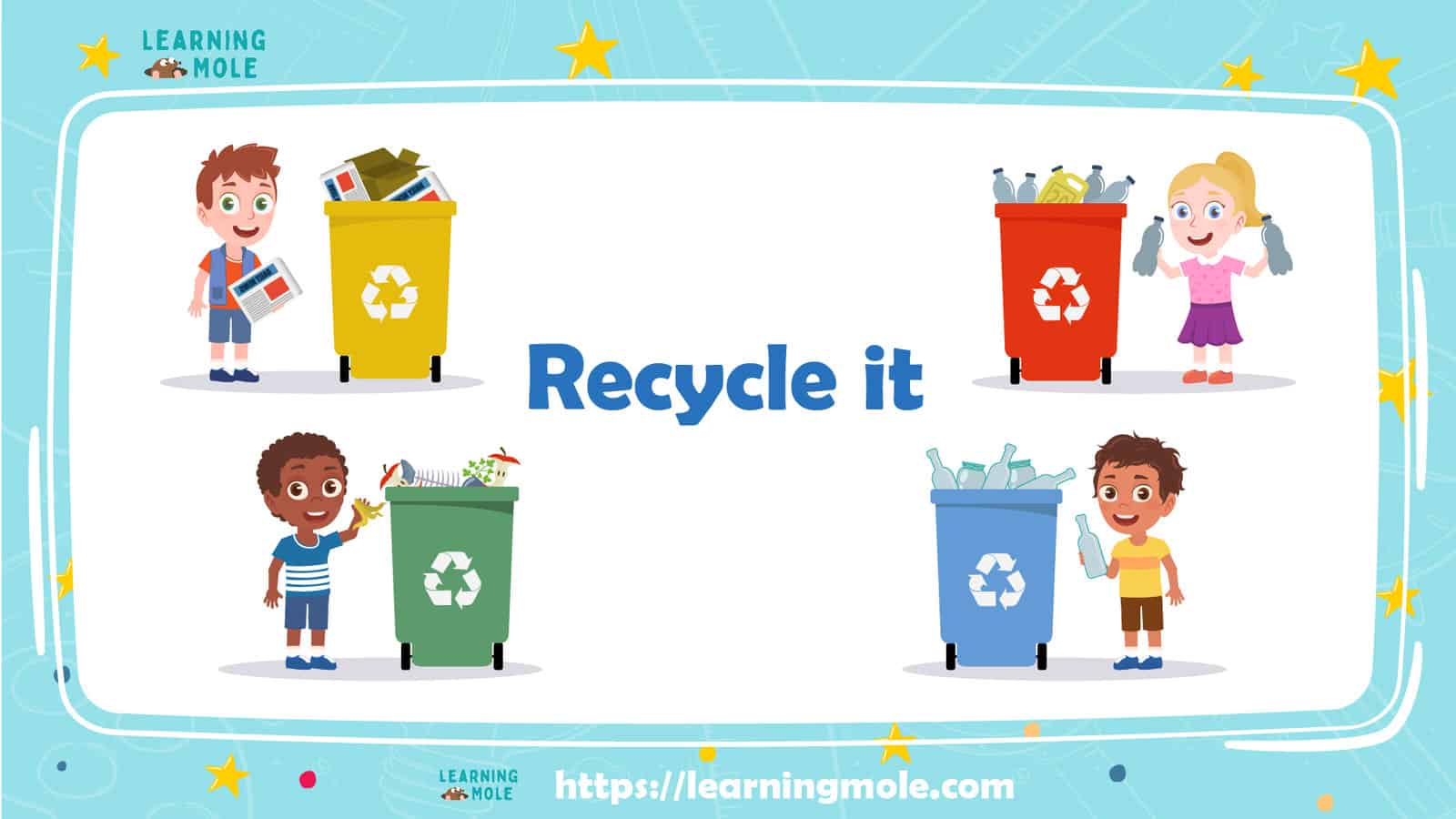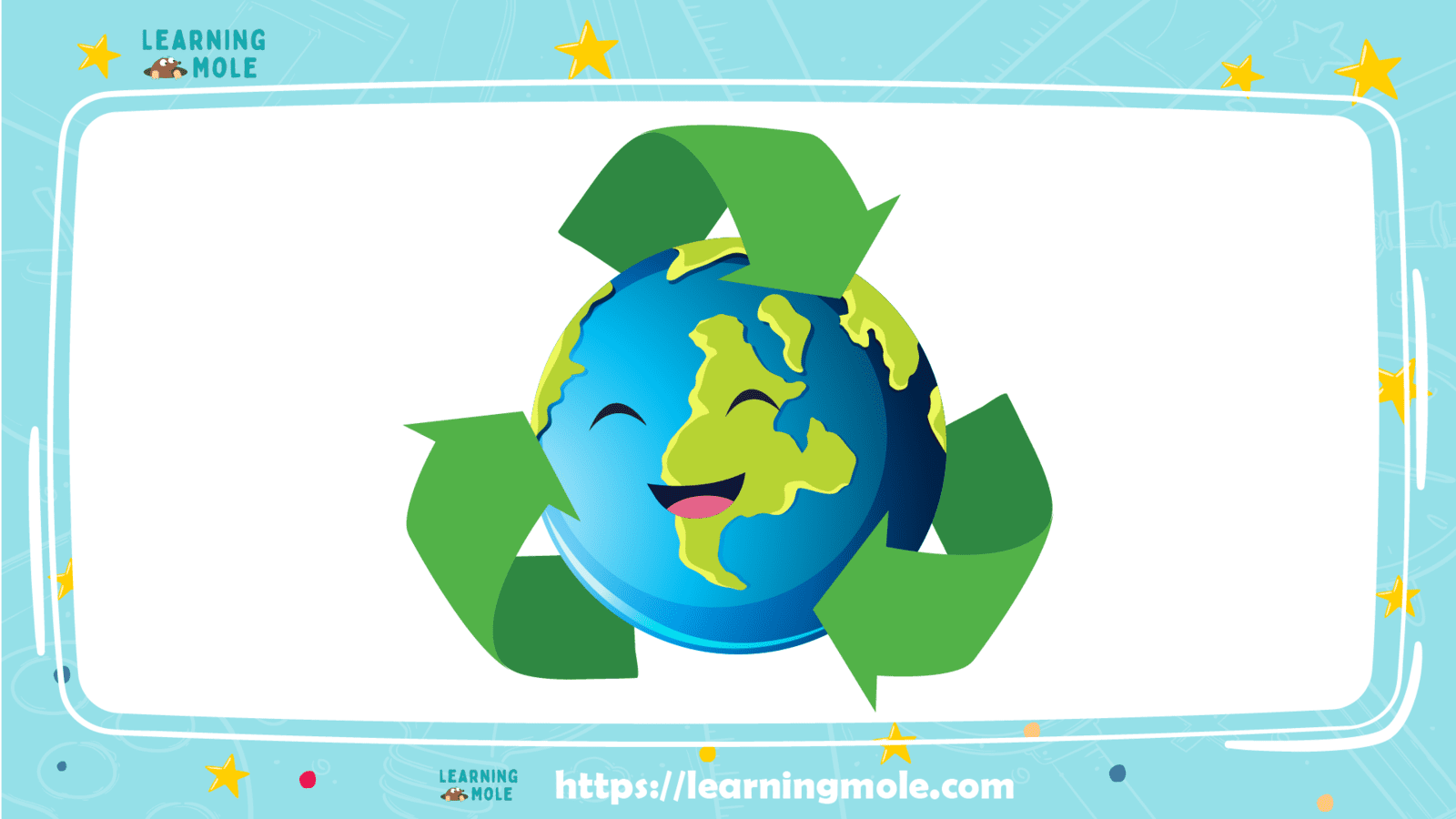
3 Amazing Recycling Facts for Kids: Learning to Reduce, Reuse, Recycle
Ensuring that your children are passionate about the environment and the world around them is one of the most important lessons that you can teach your child. Understanding that there are plenty of components that control how to look after the environment, one of the most significant ways we deal with plastics, glass, and other materials is recycling. Having recycling facts for kids is a great way of engaging them with taking an interest in the planet and learning ways to protect the earth. Instilling these recycling facts for kids at an early age encourages children to grow up with a respect for the earth and a nature that is concerned for mankind.
Why is Recycling Important?
Recycling is immensely influential for the environment. All the waste that you and your household incur has to be thrown somewhere. It is usually separated into different categories. These are typically plastic, paper, glass, aluminum, food, and general waste. Making sure that recycling occurs is integral to sustainable development, as more to 60 percent of waste can be recycled and used again. This could see objects transformed with new purposes. Multiple processes see different types of materials recycled. All take different amounts of energy for recycling to occur, but all have immense benefits that help our planet.
There are plenty of robust materials that can be recycled and utilized again. For example, aluminum can be recycled in the form of cans. Aluminum is a common material that is used to house plenty of foods. This is why recycling is so important, as these cans can be reused to serve more homes with food.
Aluminum recycling can actually save enough energy to power a television for three hours, which is rather significant. Glass is another material that is easily recycled. Glass is usually separated from other waste because of its fragility. Despite being easily broken, it can also be very dangerous and can cut people if damaged, hence its separation. Glass manages to be a recyclable material and can be reused as bottles, among other things. Some fantastic recycling facts for kids.
Recycling facts for kids will also have to contain paper. Paper is something we use every day, in school and at home, and it has a multipurpose usage. There are different types and grades of paper, so every paper is treated as unique. It is incredibly important to recycle paper, as it produces 73% less air pollution when it is recycled and not made anew from raw materials. With multiple uses, from envelopes to writing pages, from wrapping paper to books, there are plenty of ways we can recycle our paper.
Every year, families throw out around 40 kilograms of plastic – a massive sum. Plastic is one of the most difficult materials to break down, and it can take up to 500 years to decompose, so it is incredibly influential that recycling of this useful material occurs. Luckily, these materials are easily recycled and sorted for reuse. Recycling facts for kids encourage children to recycle and to take pride in their environment.
Recycling Facts for Kids: How is Paper Recycled?
Paper can be broken down into many grades and types – some recycling facts for kids already. Knowing how paper is recycled is important as it gives an awareness of the material and creates a passion for children to know where their waste is going and what happens to it. The wasted paper has a variety of steps it must comply with in order to be recycled. Recycled papers’ finished product is that of arriving in clean rolls, and it is ready to be cut and sent back to the shops.
Recycling paper is a simple process which naturally begins with the collection of the substance from recycling bins and so on. This paper is taken to a recycling plant where it is treated accordingly. Due to the many varieties of paper, it is separated into types and grades before being washed with soapy water.
This removes inks, plastic films, staples, and any glue that might be in the paper. The paper is then placed in a large holder where it is mixed with water to create a ‘slurry’. This slurry contains many materials, which can lead to a variety of products being created.
Things like cardboard, newspapers, and office paper can all be made via this process. Finally, the slurry is spread using large rollers which transform it into large, thin sheets before it is left to dry out. This dried paper is eventually rolled and becomes a desirable material once it has been treated.
A Tour in a Recycling Factory: Recycling Facts for Kids
Recycling is becoming part of the daily routine, and it is an integral part of children’s development to understand its process. Knowing what recycling is and what it does for the environment, while ensuring your children grow up with a passion for protecting the world. Recycling is essentially the conversion of waste into an object to be reused. This process prevents the waste of potential products while reducing the consumption of raw materials. This, in turn, brings energy usage low, air pollution, and water pollution. All these variables make greenhouse gas emissions lower than if the item was to be made from scratch.
Fantastic recycling facts for kids help children remember ways to recycle. One way is to think about the slogan (Reduce, Reuse, recycle), these three Rs make you think about products and their necessities as well. Can you find a way to reuse a product before you make it another part of your waste?
Recycling centers do stellar jobs to ensure that people’s waste can be recycled and reused as different items. Recycling brings multiple benefits to people, singularly and in terms of larger companies. There is environmental and economic gain to be had from participating in recycling.
The environmental benefits include preventing the waste of millions of tons of raw materials, keeping litter flow to a minimum as it conserves natural resources. Having recycling plants opens up new jobs and reduces the money that is spent on waste – it’s a winning situation on both sides of the table.
Did you know recycling has always been a part of the process of making paper? Paper, as we know it today, paper is made from trees mostly grown in working forests and from recovered paper. When you recycle your used paper, paper mills use it to make new newspapers, notebook paper, paper grocery bags, corrugated boxes, envelopes, magazines, cartons, and other paper products.
What are the things we recycle most? Paper and newspapers
It’s easy to forget that trees are chopped down to make paper and that’s why it’s important that we recycle it. Here are some facts about paper recycling:
For each ton of paper that is recycled, around 17 trees are saved.
A recycled newspaper is made into a new newspaper within seven days. All of our newspapers are made from 100% recycled paper. Most toilet paper is made from recycled paper
Over 70% less air pollution is created by making new paper from recycled paper (rather than making it from raw materials)
Recycling Facts for Kids:

To protect the planet, we need to act quickly, and it all starts with you. One of the simplest ways that you can take care of the planet and protect it for future kids is by recycling.
How much do you know?
As kids, you might think that grown-ups get to make all the decisions, but you have a very important job to do. You have to protect the planet, so it’s a safe and healthy place to live, not only for yourselves but for future generations too. There are around 7 billion people living on earth, and as you can imagine, that means a lot of resources like water, wood, energy, and other materials get used, a lot of waste is produced from everything and thrown away, and the cars we drive pollute the atmosphere.
All of this has led to global warming, which is a rise in the earth’s temperature. Global warming is causing ice to melt in the Polar Regions which makes sea levels rise, so more places are at risk of flooding. It also causes extreme weather like hurricanes and droughts, which can damage the crops that are used to produce the food we eat. Global warming is also driving animals from their natural habitats and causing some species to become endangered.
To protect the planet, we need to act quickly, and it all starts with you. One of the simplest ways that you can take care of the planet and protect it for future kids is by recycling.
The Advantages of Recycling Paper:
Before throwing that piece of paper in the trash, consider how many trees you could save by starting a recycling program in your office or school. Even recycling newspapers and paper products at home can generate neighborhood interest and help save the earth. The advantages of recycling paper go far beyond saving trees and can start with a single piece of paper.
Benefits.
Today, we’re going to tell you how paper is recycled and explain how to make homemade recycled paper. It’s a process that can be useful for special projects if you have a moment to learn it. I think you will be satisfied with something you made by yourself.
Recycling paper has several benefits, both for humans and the earth. Using recycled paper to make new paper reduces the number of trees that are cut down, conserving natural resources. In some instances, recycling services are cheaper than trash-disposal services.
Explore the previous examples and facts, and you will find yourself getting the necessary knowledge and information to fully grasp the concept of recycling. So, keep on visiting our Learning Mole to get more knowledge and information about all different kinds of stuff.



Leave a Reply